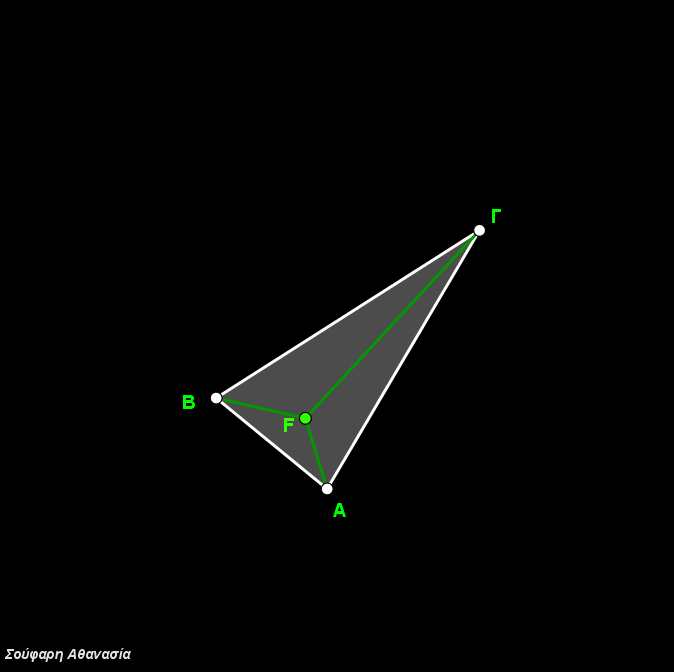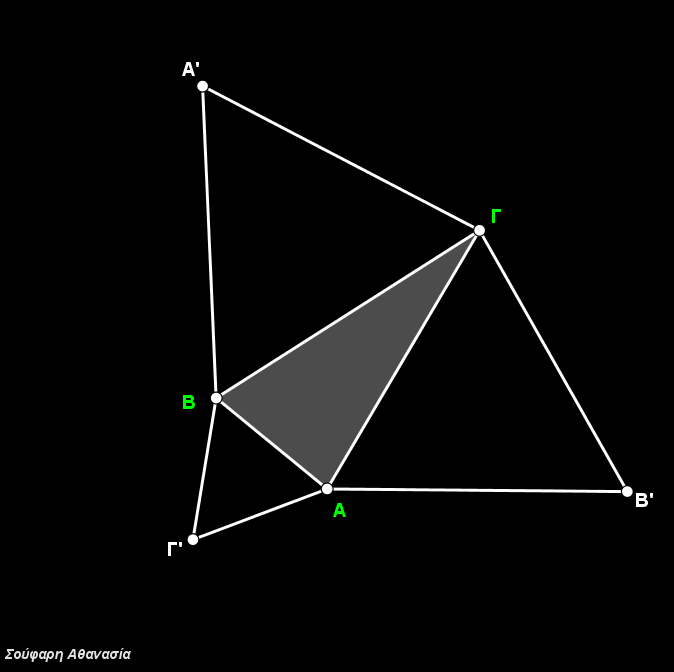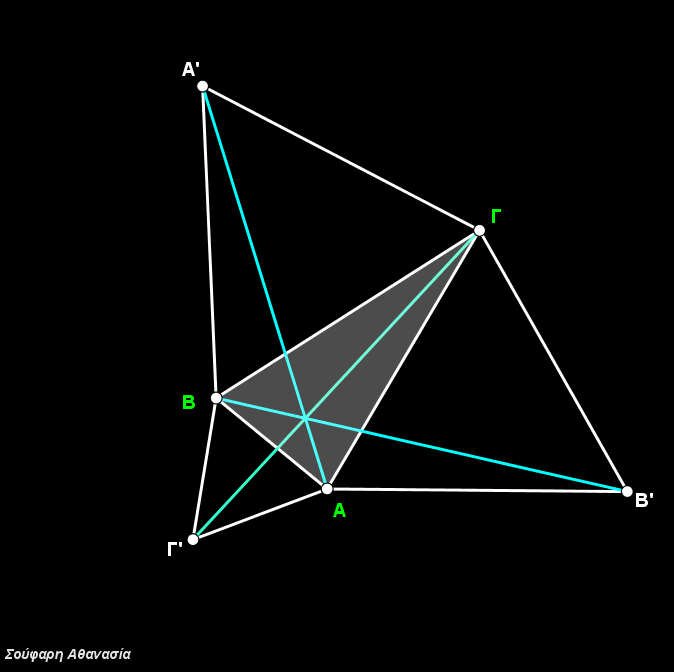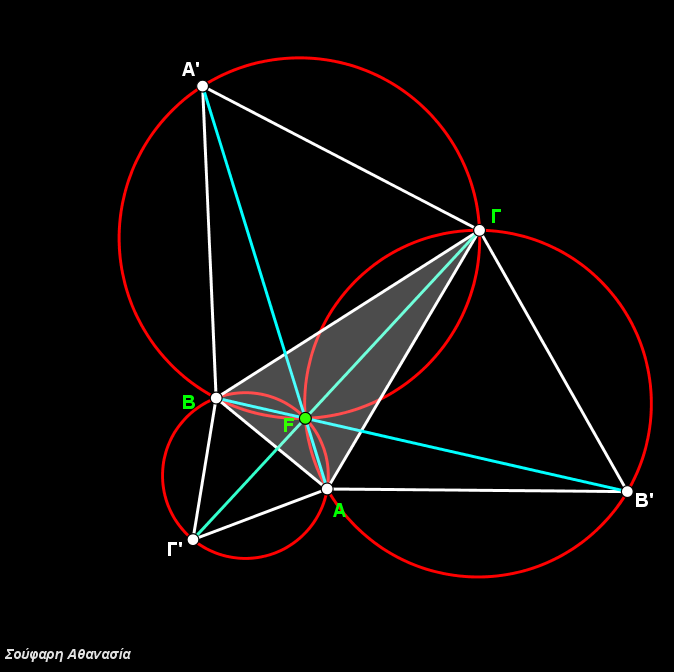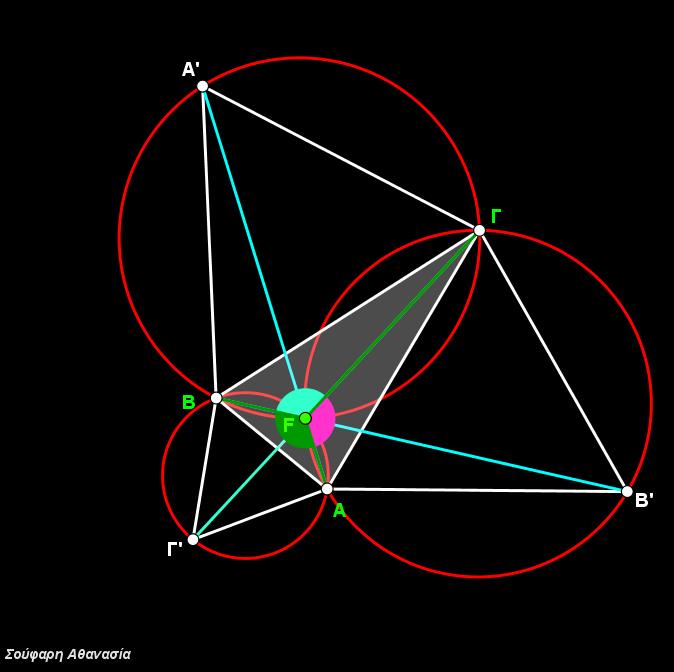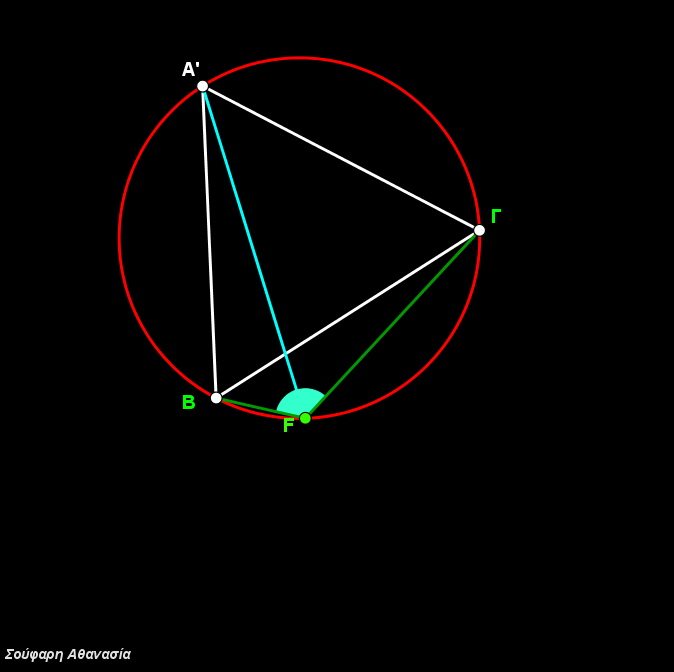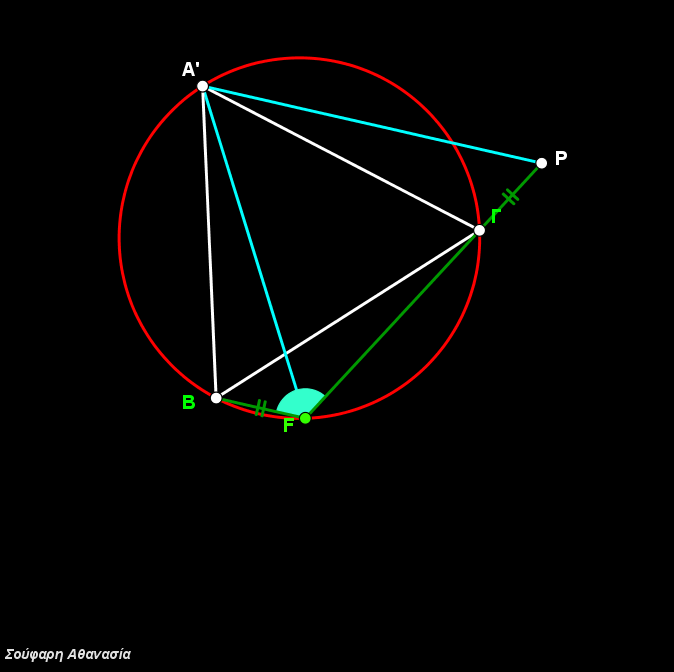UNITS
- The inspiration for an interactive GeoGebra application
- Construction and properties of the Fermat Point
- From the painter's canvas to the GeoGebra canvas
- Relative Links
On the catalogue of my favourite pages I found the web-page: http://www.ams.org/mathimagery/displayimage.php?album=27&pid=322#top_display_media When I visited the site, I was caught by a painting published there. It impressed me with its geometric structure and its three color palette. But I was impressed even more by its title “Fermat Point”. I decided to construct the painting on the GeoGebra canvas using geometric construction tools, aiming to highlight its geometry and to describe its geometric properties.
Click on the picture below to open the interactive GeoGebra application.

To navigate from one slide to the other, just click on the links (highlighted words).
|
Just like a painter’s canvas is the base of a painting, the “graphics window” on the GeoGebra software is the base of a geometric construction. In order to “play” with the colors, I created a quite big quadrilateral on the background, covering the graphics window.
There is the command Corner[
- 1st stage of the construction:
I constructed the triangle ΑΒΓ, the equilateral triangles ΒΓΑ’, ΓΑΒ’, ΑΒΓ’, their circumscribed circles and the line segments ΑΑ’, ΒΒ’ and ΓΓ’.
The intersection of the three circumscribed circles, which is identical to the intersection of the three line segments ΑΑ’, ΒΒ’ and ΓΓ define the Fermat Point F.
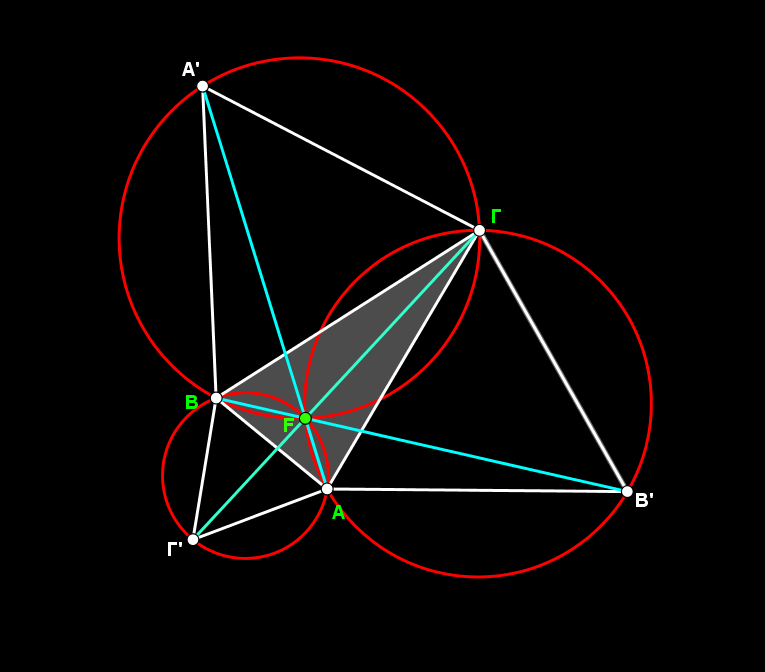
- 2nd stage of the construction:
The painting is a synthesis of geometric shapes (polygons and circular segments). I tried to reproduce the painting with its palette (three colors) and the coloring rules set by the painter Suman Vaze.
The circular segments where created by filling arcs (opacity 100%).
In each circle we meet all three colors. When triangles form vertical angles they have the same color.
The problem of the overlapping colors was solved by using layers. For instance, a circular segment that covers a part of a triangle should be placed on an upper layer, above of the triangle.
Find attached a GeoGebra file (Fermat_by_steps.ggb) that explains the “coloring game”.

- Fermat Point and Art, by Athanasia Soufari (GeoGebra Tube)
- Suman Vaze: Mathematical Artwork
- "Fermat Point," by Suman Vaze (King George V School, Hong Kong), Mathematical Imagery (AMS - American Mathematical Society)
- Fermat Point (The whole study), by Dimitris Myrogiannis
- Fermat Point, by Kostas Papastergiou (YouTube)
- How the geometry saves you money…, by Athanasios Drougas (MATH Magic)
This site is mastered by Irini Perissinaki iriniper[ατ]sch.gr
Background image by 123RF
 OR
OR



